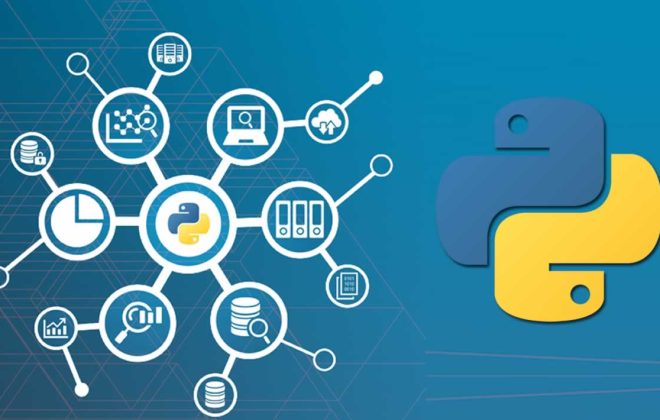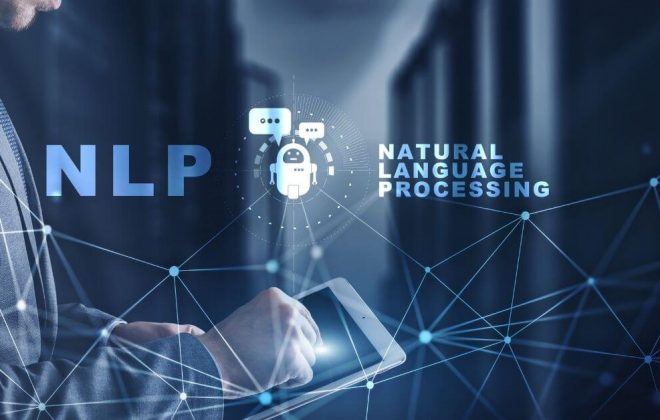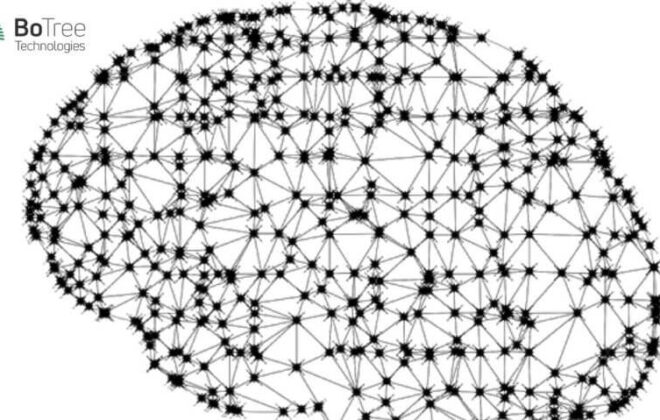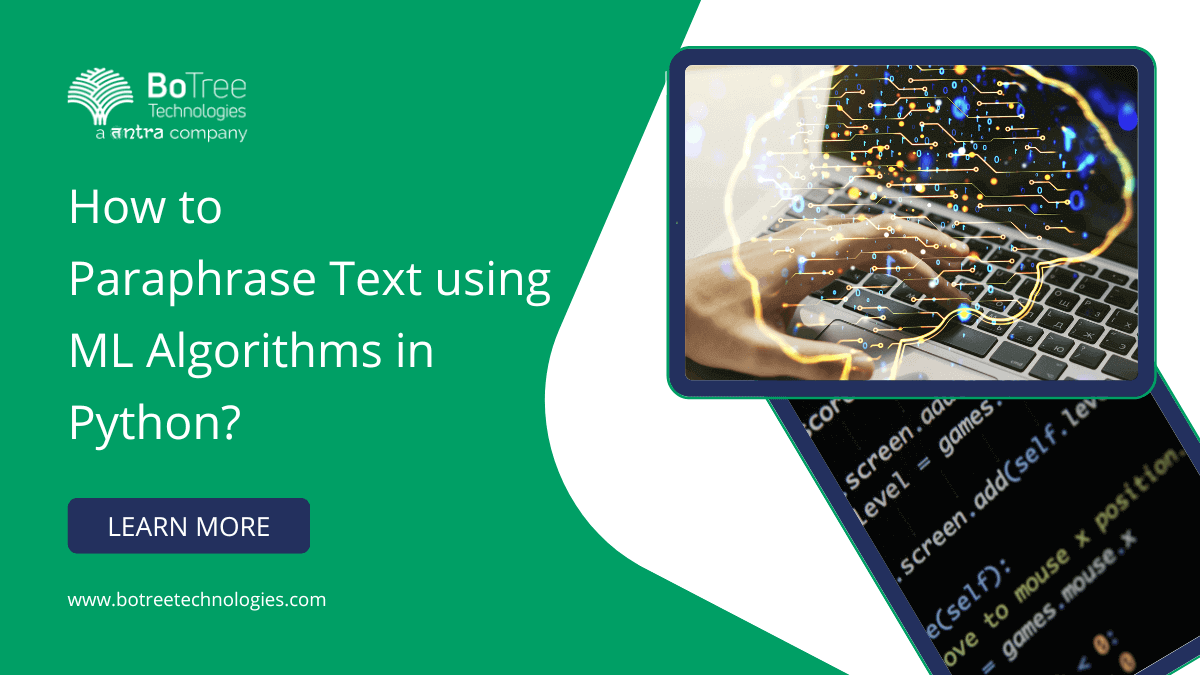
How to Paraphrase Text Using ML Algorithms in Python?
The paraphrasing technique can be of great help if you want to enhance your text’s quality and make it unique. It is used in almost every kind of writing, such as blog, copy, story, etc.
Certainly, I can add the keyword “ML solutions” to your text:
“In various forms of writing, diverse methods exist for paraphrasing text. In this article, we will explore the technique of utilizing Machine Learning (ML) algorithms in Python to achieve paraphrasing. ML solutions can significantly aid in this process, making it more efficient and accurate.”
It is a bit complicated process, but we have tried to explain it in the easiest way by providing a step-by-step guide. So, without further ado, let’s begin.
Before we do so, let’s understand what Machine Learning solutions are and how they works in Python, one of the most widely used programming languages globally.
How Does Machine Learning Work in Python?
Machine learning is teaching a computer how to learn new things independently. It helps the technology improve better while performing useful functionalities for us.
In Python, different libraries and frameworks are employed to perform machine learning. The process includes various steps, however. From collecting data, learning models, and performing commanded tasks, machine learning helps perform many tasks smoothly.
One of these tasks is paraphrasing. You can perform paraphrasing manually by simply replacing words with synonyms and altering their structure.
If you find it too hard, you can simply resort to an online paraphrase tool to do so, which also detects the words that are to be replaced by using ML and NLP.
But for now, we will perform it with the help of a different method. Let’s start it.
Paraphrasing Text Using ML Algorithms in Python:
You have to get the required transformers to paraphrase a text using a machine learning algorithm in Python.
Transformers are programs used in NLP (Natural Language Processing) to perform various tasks on texts. These transformers help the computer understand and work on human language.
The transformer that we are going to use in this process is the Pegasus transformer. We are also going to use Google Collaboration to perform this process.
So, let’s begin and try to paraphrase a text with Python ML algorithms.
Step – 1:
The transformer that we are going to use in this process is the Pegasus transformer. We are also going to use Google Collaboration to perform this process.

This will install all the required libraries for text paraphrasing.
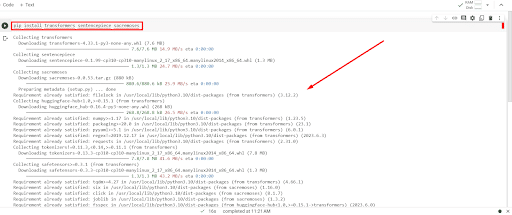
After this step, you have to import the date from these libraries by using the following code:

Step – 2:
In the second step, we will initiate the Pegasus transformer and add codes to start the text paraphrasing process. It is pretty simple. You have to “PegasusForConditionalGeneration.” This code is designed for text generation and will help us do so.
You have to write the following code to bring the required results.

Here’s how Google Collaboration responded to it.

Step – 3:
The 3rd step of trying to rephrase text using machine learning algorithms in Python includes making it able to provide us with multiple paraphrased versions of the text.
When applied, the program will give us multiple alternate versions of the text, which can help select the most suitable one for you.
To perform this task, specific instructions have to be given to the program. To do so, you have to pass “num_return_sequences” to the model “model.generate()”
Another thing you can/have to do is to make the program able to look for multiple synonyms for a word and choose the one that is the most relevant and appropriate. This part can help maintain the real idea of the text.
Let’s begin the process.
Create a next code in Google Collaboration or any other editor that you are using and paste add this:

In the code above, “num_10” is given to tell the program to provide us with 10 different paraphrased versions of the text we provided.
You will get the output by following these steps to paraphrase a sentence.
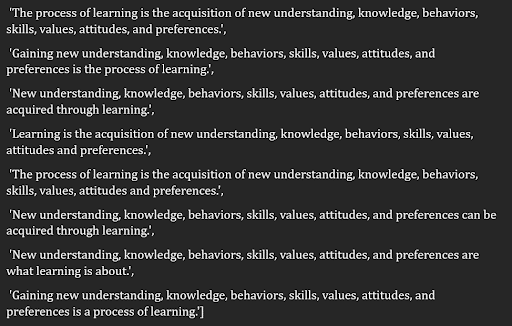
As you can observe in the image above, the provided paraphrased sentences are pretty accurate. Similarly, you can paraphrase the text of any length and get accurate results.
Paraphrasing a piece of text this way is a very time-consuming task. You can do it manually on your own. If not, many tools are also available. But there’s one thing about paraphrasing a text with the help of Python. It enables you to learn how the language is processed in these tools.
It is about learning how the tools work and providing you with rewritten content.
Besides the Pegasus transformer, other transformers can be used to paraphrase a text using machine learning algorithms. These transformers include:
- T5 Transformer: These transformers are often used for a broad range of NLP tasks and whenever a multitasking transformer is required.
- Parrot Paraphraser: These transformers are specifically designed for paraphrasing purposes. That’s why they can be a better choice for generating alternate versions of texts of high quality and appropriate.
Now, let’s discuss how paraphrasing tools (the ones that automatically restructure the content for you) employ these algorithms.
How Paraphrasing Tools Employ ML Algorithms?
The Machine Learning algorithms we have comprehensively discussed in the steps above are pre-installed in paraphrasing tools. These tools are designed based on these algorithms to help you automate the paraphrasing process.
The only difference, which is a major one, between paraphrasing by using Python on your own and using a paraphrasing tool to do the job is the time consumption and convenience.
This means that writing codes to paraphrase a text is a time-consuming and difficult task.
Paraphrasing tools use the exact (or similar) algorithms to provide the same results.
The developers of these tools make sure to feed them with enough databases to provide you with multiple paraphrased versions to enhance the quality of paraphrasing. This makes them the ideal option for paraphrasing instead of using Python coding.
Conclusion:
Learning how to paraphrase can prove to be a great skill. By performing it accurately, you can make your content unique to avoid plagiarism and bring the required tone and quality to it.
The replacement of words with their synonyms, which is the basic idea of paraphrasing, can allow you to generate multiple alternate versions of a text. These different versions have the same meaning as the original one and can be used for various purposes.
There are different methods to paraphrase content. The one we discussed in this blog includes ML algorithms in Python. Paraphrasing tools that automate the rewording and restructuring of the content for you operate according to similar rules.
These tools employ these Machine Learning algorithms to provide you with a paraphrased text. These tools already have fed a huge amount of data, which enables them to provide you with various versions of a single text. In the information above, you can find details about how to paraphrase text using ML algorithms in Python and the operating mechanism of a paraphrasing tool.
Are you looking for a Python development services? Contact BoTree Technologies (a Tntra company) today!!
